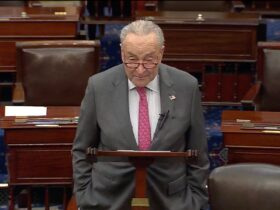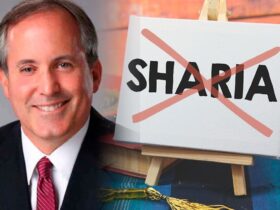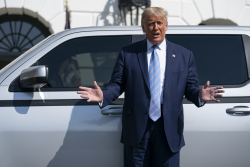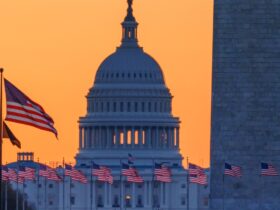President Trump upended the international trading system on Wednesday with a blunt package of global tariffs, making the case that the United States faces a dire economic emergency as a result of trade imbalances with countries across the globe.
It’s a sentiment that Mr. Trump has expressed for decades, one that helped propel him to the presidency amid anger over lost manufacturing jobs and widening trade deficits. While the United States has the largest and strongest economy in the world, Mr. Trump — and many of his supporters — have long held the view that America has been ripped off by other countries and that tariffs are the answer to rectify decades of what they call unfair treatment that has shuttered factories, decimated communities and hurt workers.
“Every prediction our opponents made about trade for the last 30 years has been proven totally wrong,” Mr. Trump said on Wednesday, pointing to trade deals such as NAFTA and the Trans-Pacific Partnership as well as the tariffs he imposed during his first term. “We can’t do what we’ve been doing for the last 50 years.”
Since his days as a real estate developer in the 1980s, Mr. Trump has been railing against the trade and business practices of other countries that he found to be unfair. Back then, when Japan was a booming economic rival, Mr. Trump used to assail its tactics.
“If you ever go to Japan right now, and try and sell something, forget about it, Oprah. Just forget about it,” Mr. Trump said, in a 1988 interview with Oprah Winfrey, adding, “They come over here, they sell their cars, their VCRs, they knock the hell out of our companies.”
This week he made good on his promise to try to force more companies to make their products in the United States. He punished trading partners with stiff tariffs, despite anxiety from economists, investors and businesses that his approach could send prices soaring and tip the economy into recession.
Mr. Trump imposed across-the-board 10 percent tariffs on all of America’s trading partners, except Canada and Mexico, which go into effect on Saturday morning. He also imposed additional tariffs on dozens of other nations, including Japan and those in the European Union, as well as on the island of Taiwan, which go into effect April 9. The most punishing levies were aimed at China, which will face a new 34 percent tariff on top of additional levies imposed by Mr. Trump earlier this year, as well as during his first administration. As a result, some Chinese products coming into the United States could face a 79 percent tariff.
The average effective U.S. tariff rate in the United States will now top 22 percent, up from 11 percent before the new tariffs were announced, according to the Yale Budget Lab. The new rate is the highest level since 1909. The tariff rate is higher than what some countries charge the United States, but the Trump administration is using calculations that include non-monetary trade barriers and other forms of what it calls “cheating.”
Mr. Trump was able to impose tariffs by designating America’s trade deficit — the gap between what the United States exports and imports — a national emergency. The president did this by using authorities given to him under the International Emergency Economic Powers Act of 1977, which gives him the power to unilaterally impose tariffs.
“Chronic trade deficits are no longer merely an economic problem, they’re a national emergency that threatens our security and our very way of life,” Mr. Trump said.
The dynamic that Mr. Trump describes has been a worry for many American workers whose jobs have been lost to cheaper overseas labor. Even some business groups that represent industries that will be hurt by retaliation from other countries have expressed hope that the measures will eventually help open markets that have been restrictive to U.S. exports.
“Obviously we have concerns,” said Kenneth Hartman Jr., the president of the National Corn Growers Association. “But there’s also hope that the Trump administration can do some negotiations to open these markets in Asia like Vietnam, India and the Philippines.”
But despite the recognition that U.S. industries are in many cases not treated fairly abroad, the notion of a crisis is another matter. Many economists and legal experts believe that the idea of an emergency has been concocted to justify Mr. Trump’s desire to impose sweeping import duties without regard to congressional approval or international trade rules.
The use of such presidential powers in such a manner had never been employed before this year. In February, Mr. Trump declared the smuggling of fentanyl and illegal immigration from Mexico and Canada to be national emergencies that justified tariffs on those countries. Defining the trade deficit that way is viewed as more questionable because most economists see trade deficits as normal functions of an economy.
The fact that the U.S. economy was outperforming the rest of the world when Mr. Trump took office in January also could undercut the theory that America is under threat. In mid-January, the International Monetary Fund upgraded its growth outlook for the United States to 2.7 percent this year while forecasting weaker growth outlooks for Europe and China.
“By any macroeconomic indicator, the economy was doing very well,” said Jonas Nahm, a Johns Hopkins University professor and former industrial policy economist in the Biden administration. “The only way to justify an emergency is to focus on trade deficits in ways that reveal a fundamental misunderstanding of how balance of payments work.”
Scott Lincicome, vice president of general economics at the Cato Institute, said that calling the trade deficit a national emergency is “beyond a stretch.” He suggested that likely legal challenges to the tariffs will be focused on the definition of an emergency and whether the president has the power to use global tariffs as a solution. The fact that the White House has not provided an analysis to show how it determined what it called “reciprocal” tariff rates on dozens of countries has also raised questions.
“On the economic side of things, pretty much everybody is coming to the conclusion quite quickly that these numbers are just made up,” Mr. Lincicome, a trade lawyer said. “I’d be stunned if there’s not a legal challenge.”
Industry groups have been considering lawsuits to stop Mr. Trump’s tariffs but so far none have been filed by businesses.
However, there is already a push to get a legal challenge underway. Ilya Somin, a law professor at George Mason University, is working with the Liberty Justice Center, a nonprofit, to find potential clients for a lawsuit. He said that a potential client would be a business that is forced to pay the new tariffs on its imports and that he was optimistic about the potential for a case.
“This statute can only apply in emergency situations and extraordinary security threats, none of which exist,” Mr. Somin said. “It’s not clear that this statute even authorizes the use of large-scale tariffs at all.”
As lawyers debate whether the United States is facing an economic emergency, the trade wars that his tariffs are poised to ignite could end up creating one.
Following the announcement of the tariffs, economists warned that they could slow growth and raise prices in the United States and weighed the possibility that they could cause a recession.
“Donald Trump’s ‘Liberation Day’ tariffs, if fully implemented, will send the advanced economies back into industrial recession just at the moment they were set to return to growth,” Jeremy Leonard, managing director of global industry services at Oxford Economics, wrote on Thursday in a research note.
But as stock markets plunged on Thursday amid fears over the disruptions that the tariffs could cause, the Trump administration and its supporters insisted that the upheaval would eventually be worthwhile for American workers.
In an interview on Fox News on Thursday, Vice President JD Vance argued that the United States could not afford to keep borrowing money from China just to buy its cheap products and let American factories shutter.
“For 40 years, we have gone down that pathway,” Mr. Vance said. “And yes, this is a big change — I’m not going to shy away from it — but we needed a big change.”












Leave a Reply